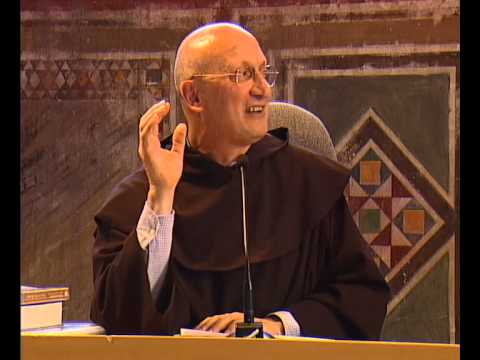"Leonie's sanctity was unique to her" - an interview with Father Antonio Sangalli, the Postulator of her cause, July 2, 2015
/Official opening of the process of beatification of Léonie Martin: “This is the moment to pray to obtain favors!”
Léonie Martin: her process of beatification officially opened on July 2 at Caen.
translated from the article "Ouverture officielle du procès de béatification de Léonie Martin: "C'est le moment de la prier pour obtenir les faveurs!'” by Laurence de Louvencourt which appeared at ilestvivant.com on July 2.
The official opening session of the diocesan stage of the process of beatification of Léonie Martin took place on Thursday, July 2, at the Monastery of the Visitation at Caen, there where Léonie, sister of Therese of Lisieux and third daughter of Louis and Zélie Martin, was a religious under the name of Sister Francoise-Therese from 1899 until her death on June 17, 1941. This session was presided over by Mgr Boulanger, bishop of the diocese of Bayeux and Lisieux.
The members of the tribunal were sworn in on a Bible placed on the table which was used at the process of canonization of Therese of Lisieux and the process of beatification of her parents, Louis and Zélie, who will be canonized on October 18 in Rome.
CaRME;LITE FATHER ANTONIO SANGALLI, THE POSTULATOR FOR LEONIE'S CAUSE. PHOTO CREDIT: SHRINE AT ALENCON
Conversation with Father Antonio Sangalli, postulator of the cause of Léonie Martin
(interview conducted July 2, 2015 at the Visitation of Caen)
Today, the bishop appointed and constituted the tribunal. This is part of the first session of the official opening of the diocesan inquiry which aims to bring to light the holiness of the servant of God, Léonie Martin. The ecclesiastical court will look at all the necessary documentation designed to prove the sanctity of Léonie Martin. There are no eyewitnesses. An historical commission has been constituted. The commission will read all the material written by Léonie. We have more than 1700 letters about her. The commission will classify them, read them, and study them. This could take about two years.
We also expect Leonie to show us that she is in heaven by a miracle. This is the moment to pray, to ask favors of her. We already have some events that occurred and are attributed to her intercession. But we must take time to study them very seriously.
In what did her sanctity consist?
"She knew how to welcome what she was. She was poorer in human qualities than her sisters (less intelligent, less beautiful, etc.). She accepted all her limitations with faith and surrender to the will of God. Léonie remained simple and humble, happy with what she was. We ourselves, we often say: “I want to be . . ., I am not . . . ., I yearn to be like that, etc.” Léonie did not react like that. She had no jealousy toward her sisters. Her example means that, with what each of us has received from nature and from our parents, a way of holiness is possible for us. In other words, to be holy does not require any special natural qualities. Sanctity consists in loving and accepting the will of God. This is what Léonie lived. She loved her inadequacies. She lived through difficult moments, including with her family. They sometimes had the habit of calling her “poor Léonie.” She surmounted all her difficulties by faith. She owed much to the education she received and also to Therese, who was always very supportive and who showed Léonie her little way of childhood, which Léonie followed wonderfully. But Léonie was able to let herself be guided, all the while remaining herself.”
Was Léonie’s holiness due to her family?
“Léonie’s sanctity is unique to her. The process of her beatification has not been opened today because she is the daughter of Louis and Zélie Martin, soon to be canonized, or because she is the sister of St. Therese. Sanctity is personal. But “Noblesse oblige,” said Léonie; she was aware that she belonged to a holy family. She says it expressly at the trial when of her sister Therese. She therefore felt “an obligation to sanctity.”
Since her death, there has been around Léonie a reputation for holiness. And that reputation is enduring today. From around the world, people come on pilgrimage to her tomb at the Visitation of Caen or write to entrust their prayer intentions. These are especially the parents of difficult children, but not only them. Today the Church is deliberating whether or not the people of God have recognized a true sanctity. After the diocesan inquiry, Rome will decide in due course. "
Her body was found well preserved in 2015?
“At the end of April, 2015, the exhumation of the body of Léonie, who died in 1941, was undertaken. The doctors were surprised to note that her body was in a good state of conservation (EDITOR'S NOTES: her body is mummified, all her organs intact). In the past, the Church considered this phenomenon as a sign of the person’s sanctity. That is no longer the case today. But one can affirm, all the same, that this does not happen to everyone. The Church has made a canonical recognition of this body today to be sure of the existence of this person. Léonie’s body was placed in a shrine which was sealed in the presence of the bishop.”
We thank ilestvivant.com, who obtained this substantive interview from Father Sangalli on the very day of the opening of Léonie's process.
